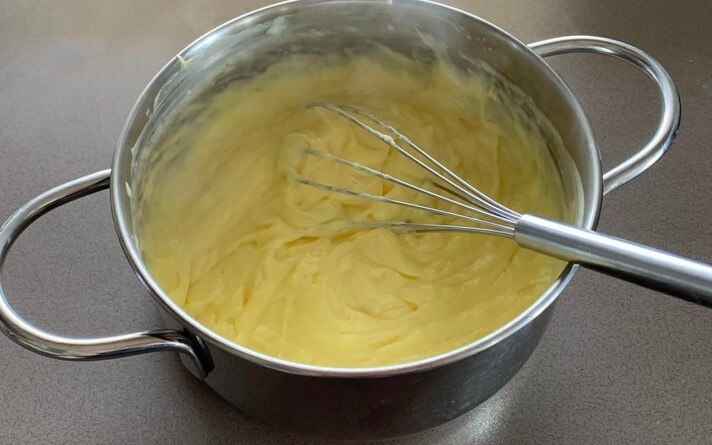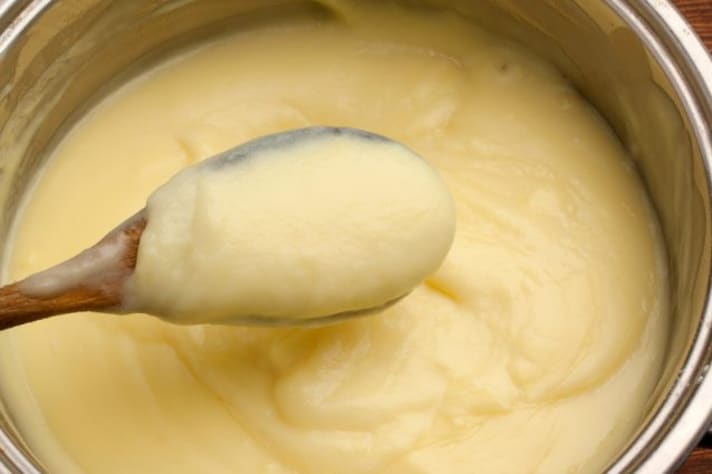Here’s Why You Should Never Stop Stirring Your Custard While Cooking It
You should never stop stirring custard while making it over the stovetop, because continuous stirring prevents lumps and clumps, avoids scrambled eggs, ensures even cooking, achieves the right consistency, and stops skin formation on the surface. By keeping the mixture moving, you create a smooth, creamy custard with a perfect texture and flavor.
;Resize,width=742;)
Custard is a beloved dessert that requires a delicate touch and a watchful eye during preparation. One of the cardinal rules when making custard over the stovetop is to never stop stirring. This simple yet crucial step ensures a smooth, creamy result and prevents a host of culinary disasters. Let’s explore why constant stirring is essential.
It Prevents Lumps and Clumps
The primary reason for continuous stirring is to prevent lumps and clumps from forming. Custard is a mixture of milk or cream, eggs, sugar, and often a thickening agent like cornstarch. When heated, these ingredients can easily separate or coagulate, leading to an unappetizing texture. Stirring constantly keeps the mixture moving, ensuring that the eggs and starch are evenly distributed and that the heat is applied uniformly. This prevents any unwanted clumping and results in a silky, smooth custard.
It Avoids Having Scrambled Eggs
One of the worst outcomes when making custard is ending up with scrambled eggs. Custard requires gentle cooking over low heat to properly thicken without curdling. If you stop stirring, the eggs in the mixture can quickly cook unevenly, leading to curdled or scrambled eggs instead of a cohesive, creamy dessert. By keeping the mixture in motion, you prevent the eggs from settling and cooking too quickly, ensuring that they incorporate smoothly with the other ingredients. Think of it as a dance – you’ve got to keep moving to keep the rhythm.

It Ensures Even Cooking
Even cooking is another critical aspect of making perfect custard. The bottom of the pan is in direct contact with the heat source, causing it to cook faster than the top. If left unstirred, the bottom layer can scorch or overcook while the rest remains undercooked. Constant stirring helps to evenly distribute the heat throughout the mixture, preventing any hotspots that could lead to burning or uneven cooking. This ensures that the custard thickens uniformly, giving you that perfect, spoonable consistency.
It Achieves the Right Consistency
The ideal custard should be smooth, creamy, and just thick enough to coat the back of a spoon. Achieving this consistency requires careful attention and constant stirring. As the mixture heats and begins to thicken, stirring helps you monitor its progress and prevents it from becoming too thick too quickly. If you stop stirring, you risk missing that perfect moment when the custard is just right. Instead, you might end up with a mixture that’s either too runny or too thick, neither of which is desirable.

It Avoids a Skin Formation
Finally, stirring prevents the formation of a skin on the surface of the custard. When heated, milk and cream can form a skin due to the proteins coagulating and rising to the surface. This skin can be tough and unpleasant in the final dish. By stirring continuously, you keep the surface in motion and prevent the proteins from settling and forming a skin. This ensures that your custard remains uniformly smooth and creamy throughout.
;Resize,width=767;)
;Resize,width=712;)


